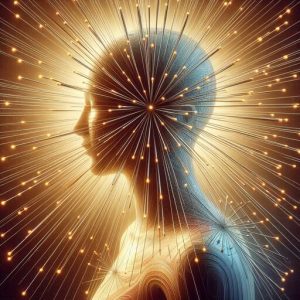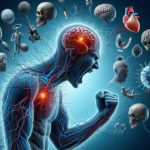Unlock the Profound Healing Potential of Acupuncture: Merging Time-Tested Wisdom with Contemporary Therapeutic Techniques
Acupuncture is a revered therapeutic practice rooted in the principles of Traditional Chinese Medicine (TCM), boasting a rich history that spans over two millennia. This ancient technique involves the precise insertion of ultra-fine needles into specific points on the body, aiming to restore balance and enhance well-being by optimizing the flow of vital energy known as Qi. The concept of Qi is viewed as the life force that exists within all living beings, and achieving its balance is essential for maintaining optimal health and vitality. By cultivating a profound understanding of Qi, individuals can unlock their innate healing capabilities and realize their fullest potential for well-being.
Recently, as healthcare models evolve toward more holistic methodologies, acupuncture is gaining recognition as a legitimate alternative therapy. An increasing number of individuals are turning to acupuncture to address a wide spectrum of health issues, ranging from chronic pain relief to managing stress and anxiety. This surge in acceptance can be attributed to its all-encompassing approach, which not only alleviates symptoms but also targets the underlying imbalances within the body. Unlike conventional medicine, which often prioritizes immediate symptom relief, acupuncture emphasizes the significance of a comprehensive restoration of health, positioning it as a crucial resource in modern healthcare practices.
Exploring Acupuncture’s Core Principles: Bridging Eastern Wisdom with Western Medical Insights
The effectiveness of acupuncture can be analyzed through two distinct perspectives: the traditional framework of Traditional Chinese Medicine (TCM) and the empirical approach of Western medicine. Within the TCM paradigm, acupuncture is believed to restore the flow of Qi along meridians—imaginary pathways that connect to specific organs. This viewpoint highlights the deep interconnection between physical health and emotional well-being, suggesting that disturbances in Qi flow can lead to a variety of health challenges.
Conversely, Western medicine takes a more scientific stance on acupuncture, focusing on its physiological effects. Research has shown that acupuncture activates nerve endings, leading to the release of neurotransmitters and endorphins—critical substances that play essential roles in pain modulation and emotional regulation. Although these two viewpoints may diverge in their foundational principles, they complement each other by illustrating the extensive benefits that acupuncture offers. This combination enriches our understanding of acupuncture and showcases its versatility as a healing modality that harmoniously integrates ancient wisdom with modern scientific insights.
Understanding the Vital Role of Qi in Traditional Chinese Medicine (TCM)
 In the realm of Traditional Chinese Medicine (TCM), the concept of Qi is paramount and is considered the essence that regulates health and overall vitality. Often referred to as “life energy” or “vital force,” Qi is crucial for the body’s optimal functioning, driving essential physiological processes such as cellular metabolism, immune responses, and cognitive clarity. Maintaining a smooth and abundant flow of Qi is vital for health; when this flow is interrupted due to stagnation, deficiency, or blockages, a multitude of health problems can emerge.
In the realm of Traditional Chinese Medicine (TCM), the concept of Qi is paramount and is considered the essence that regulates health and overall vitality. Often referred to as “life energy” or “vital force,” Qi is crucial for the body’s optimal functioning, driving essential physiological processes such as cellular metabolism, immune responses, and cognitive clarity. Maintaining a smooth and abundant flow of Qi is vital for health; when this flow is interrupted due to stagnation, deficiency, or blockages, a multitude of health problems can emerge.
Qi travels through a complex network of meridians, which are theoretical pathways responsible for distributing energy throughout the body. TCM identifies twelve primary meridians, each associated with specific organs like the heart, lungs, or kidneys, each possessing distinct characteristics and functions. Ensuring harmony within the flow of these meridians is essential; any disruptions in the flow of Qi can lead to imbalances affecting both physical and emotional well-being.
Acupuncture operates as a therapeutic modality within TCM, concentrating on regulating and restoring the flow of Qi. By skillfully inserting needles into acupuncture points located along these meridians, practitioners can eliminate blockages and alleviate energy stagnation. This process not only promotes physical healing but also fosters an overall sense of well-being. Consequently, the practice of acupuncture strives to harmonize the body’s energy, ensuring that Qi flows freely and effectively, which is essential for achieving optimal health and vitality.
Specific Techniques for Restoring Qi Flow: Discovering Effective Acupuncture Methods
Acupuncture is intricately designed to restore the body’s balance and facilitate the unimpeded flow of Qi through the strategic insertion of needles into carefully selected acupuncture points along the meridians. These points are thoughtfully chosen based on their associations with specific organs and their relevance to the patient’s health concerns, adhering to the principles of Traditional Chinese Medicine (TCM). By thoroughly understanding the intricate relationships between these points and the overall meridian system, acupuncturists can tailor treatments to effectively meet the unique needs of each patient.
The insertion of acupuncture needles triggers a cascade of physiological responses that significantly influence the flow of Qi. As the needles are inserted, sensory nerves in the skin and deeper tissues become activated. This stimulation sends signals to the brain and spinal cord, resulting in the release of neurotransmitters and endorphins—natural substances that assist in regulating mood and alleviating pain. The brain’s response to these signals can evoke profound sensations of relaxation and emotional equilibrium.
Moreover, the mechanical action of needle insertion may create microtraumas in the surrounding tissues, which subsequently activates the body’s inherent healing mechanisms. This process enhances blood circulation, improves oxygen delivery, and facilitates the release of growth factors crucial for tissue repair and regeneration. The concept of acupuncture as a means to facilitate Qi flow underscores its significance not only in symptom relief but also in promoting overall health by addressing both physical ailments and emotional imbalances.
Exploring the Wide-Ranging Benefits of Acupuncture for Comprehensive Well-Being
Acupuncture offers a diverse spectrum of benefits that extend well beyond simple pain relief, significantly contributing to overall well-being. It is widely recognized for its efficacy in alleviating various types of pain, including chronic conditions such as lower back pain, osteoarthritis, and migraines. By activating specific acupuncture points, this practice can modulate pain perception, reduce inflammation, and stimulate the body’s natural production of endorphins, which are vital for pain relief.
Additionally, acupuncture positively influences the body, mind, and spirit. Many individuals report experiencing deep relaxation, tranquility, and improved mood following treatment sessions. This beneficial response is likely linked to the release of neurotransmitters such as serotonin and dopamine, which are critical for mood regulation and enhancing emotional health.
Furthermore, acupuncture can enhance overall well-being by bolstering the immune system, improving sleep quality, and alleviating stress and anxiety. By restoring balance in the flow of Qi, acupuncture addresses the underlying causes of various health issues, optimizing the functioning of the body’s systems. Patients may experience increased energy levels, enhanced digestion, and a revitalized sense of vitality, empowering them to face life’s challenges with greater resilience and strength.
In-Depth Exploration of the Scientific Foundations of Acupuncture from a Western Perspective
Investigating the Physiological Responses Triggered by Acupuncture: A Detailed Scientific Inquiry
In recent decades, Western medicine has made significant strides in uncovering the scientific mechanisms that underlie acupuncture through thorough research and empirical investigation. While the traditional notion of Qi may not align perfectly with Western scientific paradigms, numerous studies illuminate the physiological responses that acupuncture initiates, providing insight into its mechanisms of action.
Research has revealed that the insertion of acupuncture needles induces a variety of physiological responses, activating anatomical structures such as nerves, muscles, and connective tissues. This mechanical stimulation sets off a series of local and systemic responses. At the site of needle insertion, acupuncture creates microtraumas in the surrounding tissues, prompting the release of inflammatory mediators and growth factors that catalyze the body’s natural healing response.
Moreover, research has demonstrated that acupuncture activates sensory nerves, sending signals to the brain and spinal cord, thereby modulating pain perception and promoting the production of endorphins, serotonin, and other neurotransmitters that yield analgesic and mood-enhancing effects. This intricate interplay of biochemical, neurological, and biomechanical responses contributes to the therapeutic impacts of acupuncture, suggesting it plays a vital role in enhancing health and overall well-being.
Although ongoing research continues to explore the detailed mechanisms through which acupuncture exerts its effects, a growing body of evidence supports its efficacy as a complementary option for a broad range of health conditions. This expanding research highlights the significance of acupuncture in improving health outcomes and its relevance within contemporary healthcare frameworks.
Evaluating the Role of Acupuncture in Effective Pain Management Approaches
Research within Western medicine has underscored how acupuncture effectively alters pain perception and stimulates the release of natural compounds that mitigate pain within the body. Endorphins, often referred to as the body’s natural painkillers, are pivotal in pain modulation and promoting feelings of well-being.
During acupuncture sessions, practitioners insert needles into specific acupuncture points, activating sensory nerves located just below the skin’s surface. This stimulation triggers a cascade of physiological responses culminating in the release of endorphins and other neurotransmitters. These chemicals interact with opioid receptors in the brain and spinal cord, effectively inhibiting the transmission of pain signals and offering significant relief for various conditions, including chronic pain syndromes such as fibromyalgia, arthritis, and neuropathic pain.
Numerous studies have shown that acupuncture can lead to a marked increase in endorphin levels, providing substantial pain relief to patients suffering from various ailments. Additionally, the release of endorphins may enhance mood and promote feelings of relaxation during and after treatment, thereby supporting overall well-being.
Acupuncture has also been shown to influence the release of other neurotransmitters, such as serotonin and dopamine, which are crucial for emotional regulation and mental health. By promoting the release of these beneficial chemicals, acupuncture not only alleviates pain but also strengthens psychological and emotional well-being, reinforcing the holistic approach defining this ancient healing practice.
Research and Evidence Supporting Acupuncture’s Effectiveness: An Expanding Knowledge Base
Acupuncture has garnered the attention of researchers around the globe, leading to a growing body of evidence that validates its effectiveness in treating a variety of health conditions. Numerous scientific studies and meta-analyses have investigated the efficacy of acupuncture in addressing a wide range of ailments, including chronic pain, musculoskeletal disorders, migraines, and mental health challenges.
For instance, several studies have demonstrated that acupuncture can significantly reduce pain intensity and enhance functional outcomes in conditions such as lower back pain, osteoarthritis, and fibromyalgia. Moreover, acupuncture has shown promising results in managing chemotherapy-induced nausea and vomiting, sleep disturbances, and menopausal symptoms like hot flashes.
While the evidence supporting acupuncture’s efficacy is encouraging, it is important to acknowledge that the research landscape is continually evolving, with ongoing discussions regarding its mechanisms of action. Some studies suggest that acupuncture influences the body’s neuroendocrine system, while others focus on local tissue responses and neural signaling pathways.
Additionally, variations in acupuncture techniques, differences in treatment protocols, and individual patient responses complicate the evaluation of research outcomes. Despite these complexities, a growing number of studies endorse acupuncture as a valuable therapeutic option, particularly as a complement to conventional treatment methods. Continued research is essential for enhancing our understanding of acupuncture mechanisms and optimizing its therapeutic applications across diverse patient demographics.
Essential Preparations for Your Acupuncture Appointment: Important Insights Before Your Visit
Acupuncture sessions are typically conducted in a serene and calm environment, reminiscent of a spa or wellness center. The treatment room is usually softly lit and accompanied by soothing music that encourages relaxation. Upon arrival, patients are warmly welcomed by their acupuncturist, who will conduct a brief consultation to assess health concerns and therapeutic goals.
Following this initial consultation, patients are invited to lie comfortably on a padded massage table, similar to those utilized in massage therapy. The acupuncturist may provide blankets or pillows to ensure maximum comfort throughout the session. Depending on the treatment area, patients might be asked to partially undress or wear loose-fitting clothing that allows easy access to the necessary acupuncture points.
As the acupuncture treatment begins, patients may experience various sensations during needle insertion. Acupuncture needles are exceptionally thin, typically ranging from 0.12 to 0.35 millimeters in diameter, making them significantly finer than standard hypodermic needles. Most patients report minimal discomfort or no sensation during needle insertion, often describing the experience as a light prick or tingling. Once the needles are positioned, the acupuncturist may perform gentle manipulations to enhance the therapeutic effect.
In addition to traditional manual acupuncture, various techniques may be employed during the session, including electrical acupuncture, which applies gentle electrical currents to the needles, and auricular acupuncture, focusing on acupuncture points on the ear. The acupuncturist will customize the treatment approach to meet each patient’s unique needs and preferences, thereby delivering a personalized and effective healing experience.
Ensuring Safety and Quality in Acupuncture: Highlighting Practitioner Credentials
Acupuncture is generally regarded as a safe and well-tolerated procedure when performed by a qualified and licensed practitioner. However, like any medical intervention, potential risks and considerations should be acknowledged.
Identifying Potential Side Effects of Acupuncture
While acupuncture is considered a minimally invasive practice, some patients may experience mild side effects following treatment. Commonly reported side effects include slight bleeding or bruising at the insertion site, particularly in individuals with sensitive skin or those…
The Article Acupuncture: Understanding Its Fundamental Mechanisms appeared first on https://mcrtherapies.com
The Article Acupuncture: Exploring Its Core Mechanisms and Benefits Was Found On https://limitsofstrategy.com


Your exploration of acupuncture as a blend of ancient wisdom and modern therapeutic techniques is particularly compelling, especially given the current cultural shift towards integrative healthcare practices. I’ve noticed firsthand the growing recognition of acupuncture in Western medical communities, which often prioritize a more holistic view of health. This movement towards integration reflects a broader understanding of wellness that connects body, mind, and spirit—something that is deeply embedded in Traditional Chinese Medicine (TCM).
Your exploration of acupuncture as a bridge between ancient wisdom and modern healing practices truly resonates with me. I’ve often found that the slow, mindful approach of TCM offers a refreshing contrast to the rapid pace of contemporary healthcare, which can sometimes overlook the individual’s holistic needs.